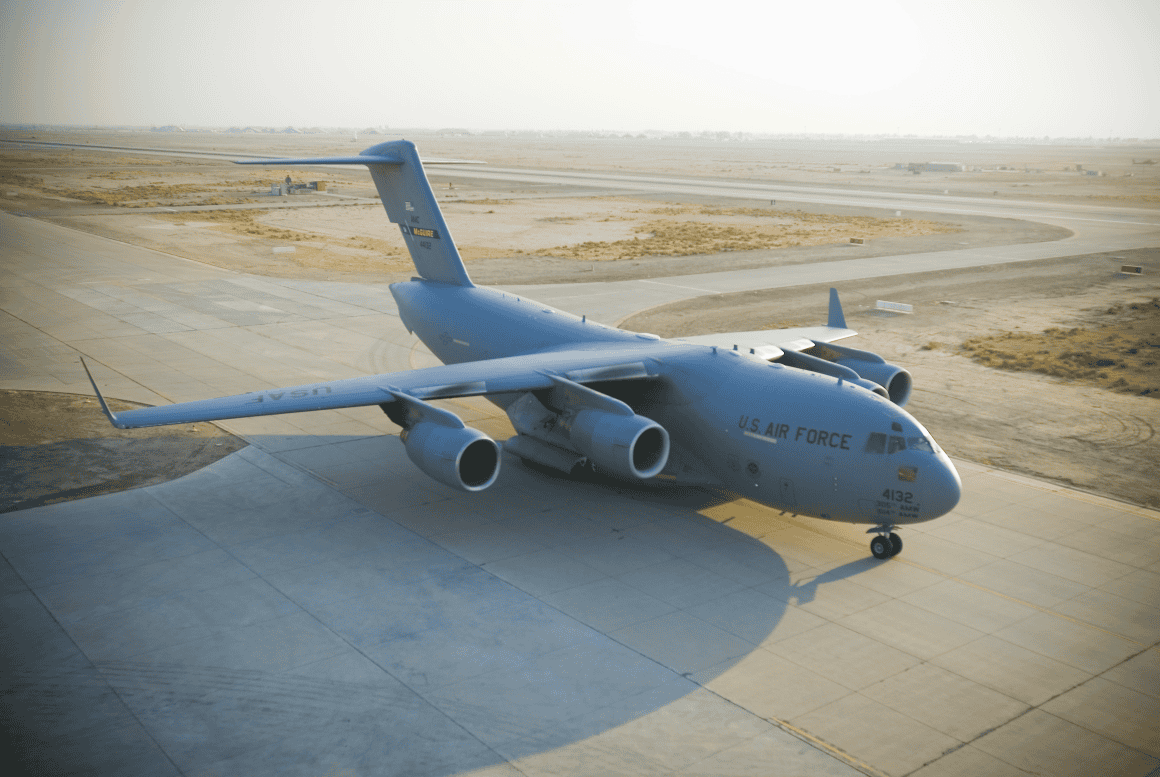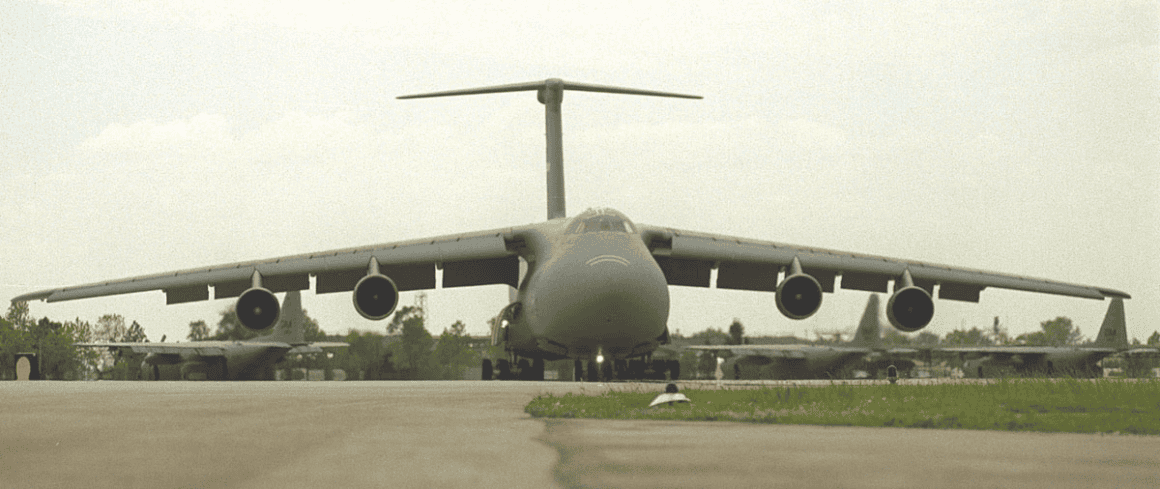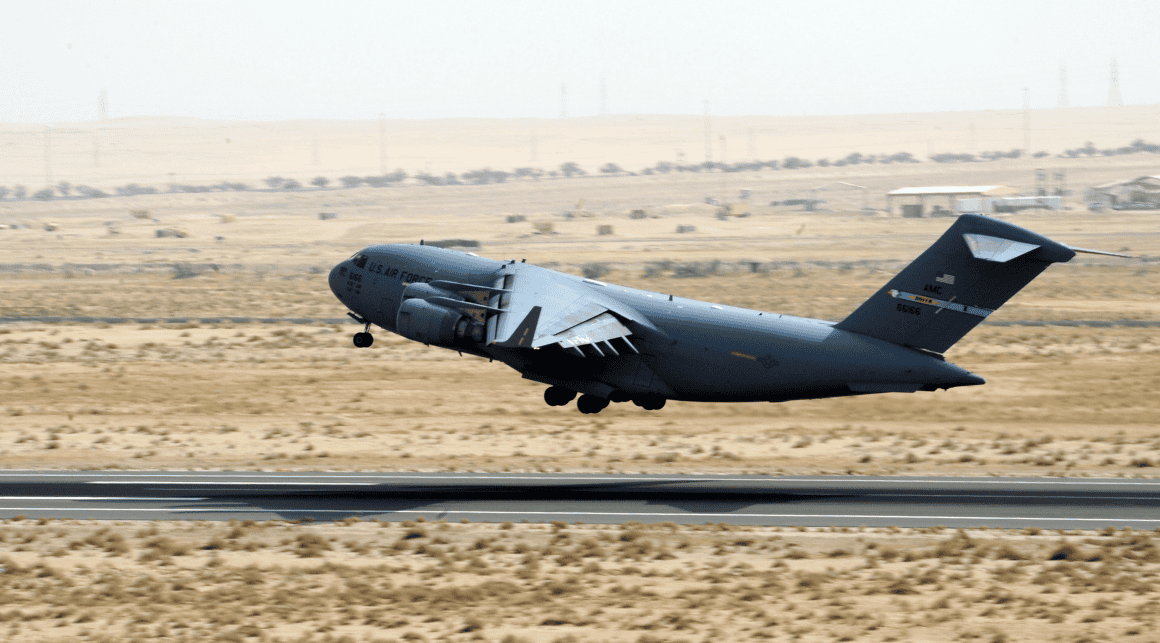It is no secret that the C-5 and C-17 are getting older.
The C-5 began flying in 1970, and the C-17 joined the Air Force inventory in 1993. With the ages of these vital aircraft, it seems logical that the United States would have replacements ready or at least be developing new transport aircraft.
However, that is not the case. Instead, the United States is spending billions on refurbishments and modifications. Some other ideas do exist, but there are no definite plans.
C-5 and C-17 Have Provided Critical Airlift For Decades
The Lockheed C-5M Super Galaxy is the largest aircraft in the Air Force inventory. With four General Electric CF6-80C2-L1F engines and five sets of landing gear, it can fly approximately 5,524 miles unrefueled. It can also operate from relatively short runways, considering its size. At 247 feet long, a width of 19 feet, and a height of 65 feet, it can carry a maximum cargo of 221,000 pounds.

The Boeing C-17 Globemaster III is perhaps the most flexible transport aircraft in the Air Force. It can perform missions ranging from tactical airlift and airdrop to aeromedical evacuation. It carries four Pratt & Whitney F117-PW-100 turbofan engines and can deploy its thrust reversers upward and forward to create drag during descents and even make the aircraft taxi in reverse.
The C-17 is 174 feet long and 55 feet high, and its cargo compartment is 18 feet wide. It can carry 170,000 pounds of cargo.

The first operational C-5 arrived at Charleston AFB, South Carolina in 1970. Lockheed built 131 C-5s, and production ran from 1968 to 1973. The first production model of the C-17 also went to Charleston years later, in 1993. Boeing built 279 C-17s between 1991 and 2015.
Now, with both aircraft decades old, the Air Force must decide how to maintain a strong, even improved, air mobility capability. As of 2025, it appears the Air Force is focused on refurbishing and updating the C-5 and C-17.
Billions Spent for Major Upgrades, Not Replacements, for C-5 and C-17
In 2018, the Air Force invested $10 billion in an upgrade for the C-5. This effort was called the Reliability Enhancement and Re-engining Program (RERP) and the Avionics Modernization Program (AMP). It included replacing the GE TF-39 engines with more powerful and reliable GE CF6-80C2 turbofans. The stated goal was to push C-5 mission capable (MC) rates to about 75% and for the aircraft to remain in service into the 2040s.
However, following some positive results, the fleet’s readiness numbers have decreased. From 2022 to 2023, mission capable rates dropped from 52% to 46%. Air Force officials responded by saying the decline was due to a lack of available parts.

The Air Force is also spending money on the C-17. In 2022, the service contracted with Boeing on a $24 billion contract for the Globe 2.0 program. Key parts of this include research and development and trial kit installations to address obsolescence concerns and add new capabilities to the aircraft. Some specifics of this might include installing new Core Integrated Processors, a modernized GPS, and infrared countermeasures.
In 2024, the C-17 mission capable rate was 75.2%, down from 76% in 2023. This may not be a significant drop, but it is clearly a reduction.
Air Force Officials Concerned About Aging C-5 and C-17 Aircraft
While it is unclear how successful these refurbishment and modernization programs may be, Air Force officials are concerned. In 2022, the USAF Air Mobility Command addressed potential mobility issues in a document called “The Mobility Manifesto.”
One section deals with the overall program: “The State of Acquisition is Uncompetitive. Our planning, budget, and execution process is slow, cumbersome, and inadequate. Industry produces exceptional and exquisite mobility platforms at great cost and time, but not en masse.”
The document continues with a stark warning: “Our force posture and acquisition has set us on a collision course to fail.”
Finally, the document addresses the need for modernized support functions for air mobility: “Foremost, technical improvements must come at the aft end of the aircraft—the materials handling equipment, the loading equipment, the refueling technology, and in-transit visibility must be uniform and common across the board. Without these improvements, we cannot improve mass.”

Multiple Ideas, But No Plans For Replacements for C-5 and C-17
While there are no definite plans for aircraft to replace the C-5 and C-17, there has been some discussion of possible alternatives.
NASA and Lockheed Martin addressed this topic in a 2000 document titled “The Future of Very Large Subsonic Transports.” The document describes the desire to develop a Very Large Subsonic Transport, a “multi-use commercial passenger, commercial cargo, and military airlifter roughly 50% larger than the current Lockheed C-5 and Boeing 747.”
It explicitly refers to Air Force needs for “military airlift with adequate capacity to load current weapon systems, with minimal break-down, over global ranges (7,000 to 10,000 miles) required to reach the operational theater without needing overseas bases and midair refueling.”
The Air Force has explored options to address a potential mobility gap. In 2019, then-Secretary of the Air Force Heather Wilson proposed replacing two C-130 squadrons with three C-17 squadrons, requiring an unspecified number of new C-17s. When questioned about the source of these aircraft, Wilson stated, “Those are details that we have not looked at.”
Boeing has even hinted that it could consider restarting its C-17 production line, which closed in 2015. In February 2024, Boeing’s vice president and general manager for global services, Torbjorn Sjogren, said multiple potential customers had been asking about new C-17s.
“The C-17 is a product that does come up quite often. If we still had a lukewarm production line, there are a number of customers who have expressed interest,” said Sjogren.

The USAF Designation for the CF6-80C2B is F138GE-100.